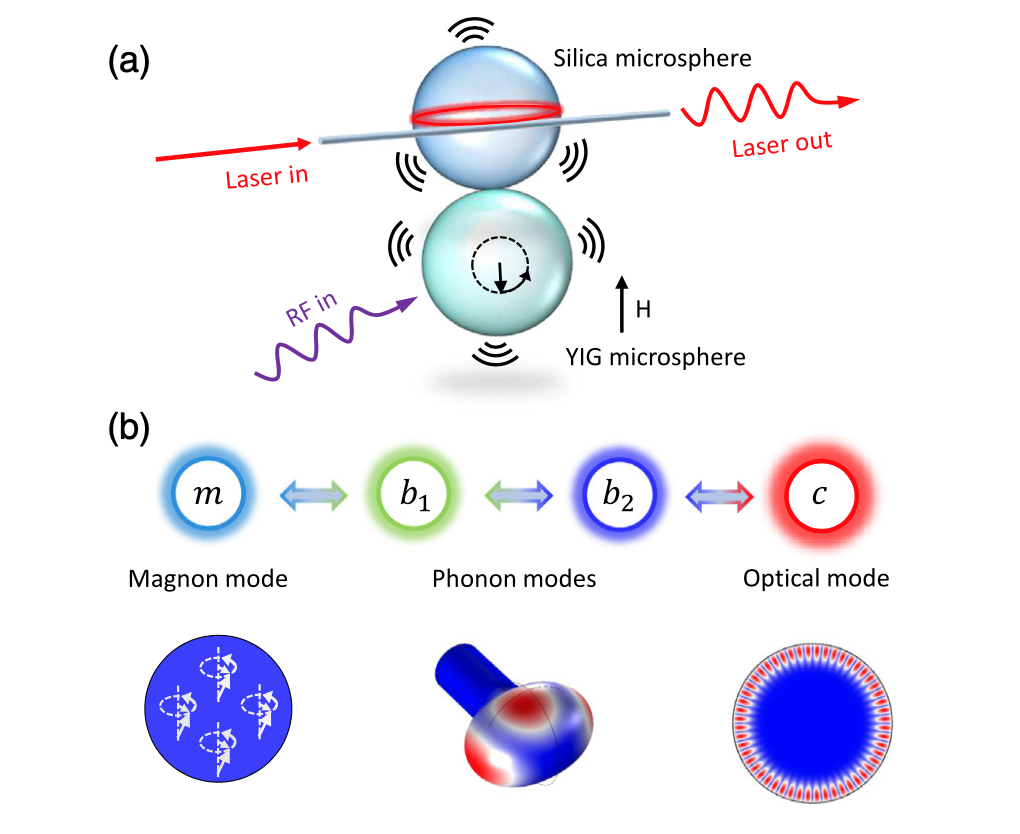
A research team led by academician GUO Guangcan and Prof. DONG Chunhua from the University of Science and Technology of China (USTC) of the Chinese Academy of Sciences (CAS) has made progress in magno-optomechanical hybrid system. The researchers developed a hybrid system supporting the coherent coupling between an optomechanical cavity and a magnomechanical cavity though straightway physical contact, achieving a microwave-to-optical conversion. The study was published in Physics Review Letters.
Different quantum systems, including rare-earth-ion-doped crystals, superconducting circuits, and spins in yttrium iron garnet (YIG) or diamond, features unique type of quantum operations.
Previous research by the team has realized a tunable frequency conversion between microwave and photons utilizing the dynamical Faraday effect in a YIG microsphere. However, both the implementation of cavity optomagnonics and the most optomechanical systems have weaknesses, with the former having limited magneto-optical interaction strength and the latter having limited practical applications due to a lack of tunability.
In this study, the researchers developed a system comprising an optomechanical cavity consisted of silica microsphere and a magnomechanical cavity consisted of YIG microsphere. Photons could be electrically manipulated through magnetostriction effect or be optically manipulated through optical radiation pressure. Photons in different microcavities could be coherently coupled through direct physical contact.
Based on the high-quality optical measurement of the mechanical state of the system, the researchers achieved a microwave-to-optical conversion with an ultrawide tuning range, far exceeding that of the previous magneto-optical single system.
In addition, they observed a mechanical motion interference, in which the optically induced motion of the mechanical resonator is canceled by microwave-driven coherent motion.
In the future, this hybrid system that combines controlled phonons, magnons, and photons is expected to be applied in signal transduction and sensing.

Schematic of the hybrid system that combines controlled phonons, magnons, and photons (Image by SHEN Zhen at al.)
Jane FAN Qiong
University of Science and Technology of China
E-mail: englishnews@ustc.edu.cn

86-10-68597521 (day)
86-10-68597289 (night)

52 Sanlihe Rd., Xicheng District,
Beijing, China (100864)

